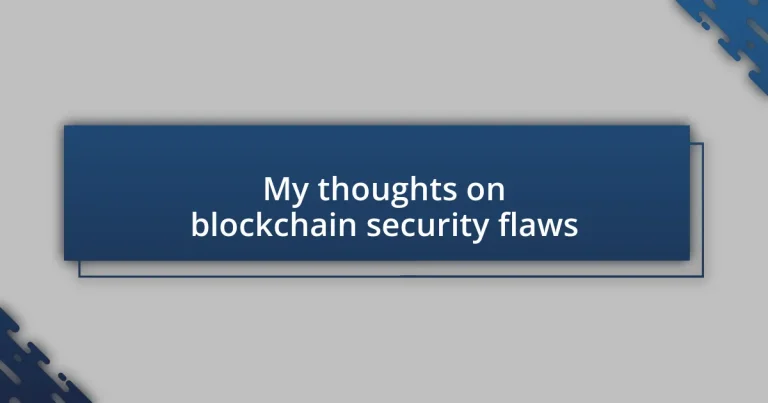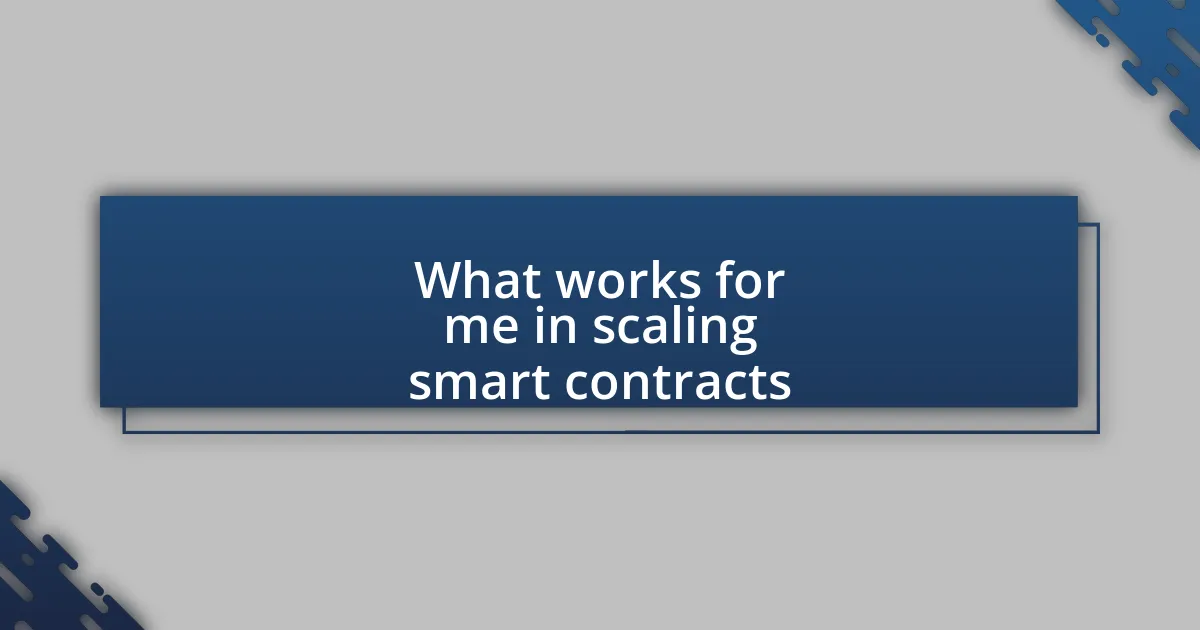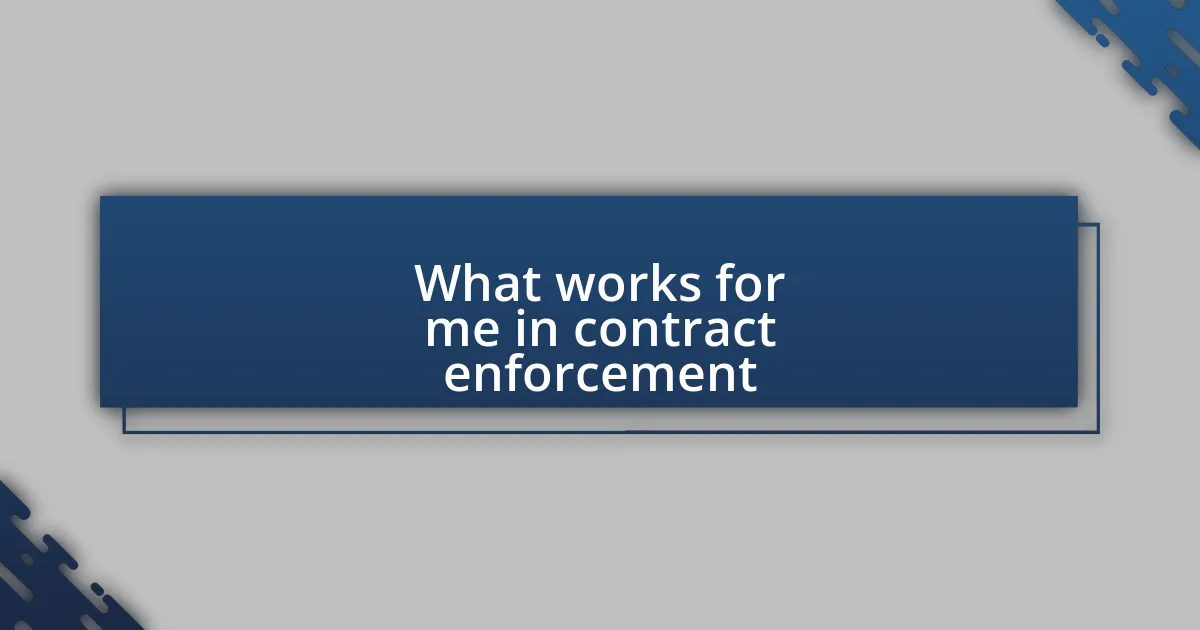Key takeaways:
- Blockchain security flaws can stem from smart contract vulnerabilities, 51% attacks, and inadequate key management, leading to significant financial losses.
- Case studies like the DAO hack and Parity wallet bug highlight the need for rigorous testing and auditing in blockchain development.
- Adopting modular architecture, secure coding practices, and staying updated with security trends are essential best practices for blockchain developers.
- The future of blockchain security will likely involve AI integration, decentralized security protocols, and the development of regulatory frameworks to enhance safety.
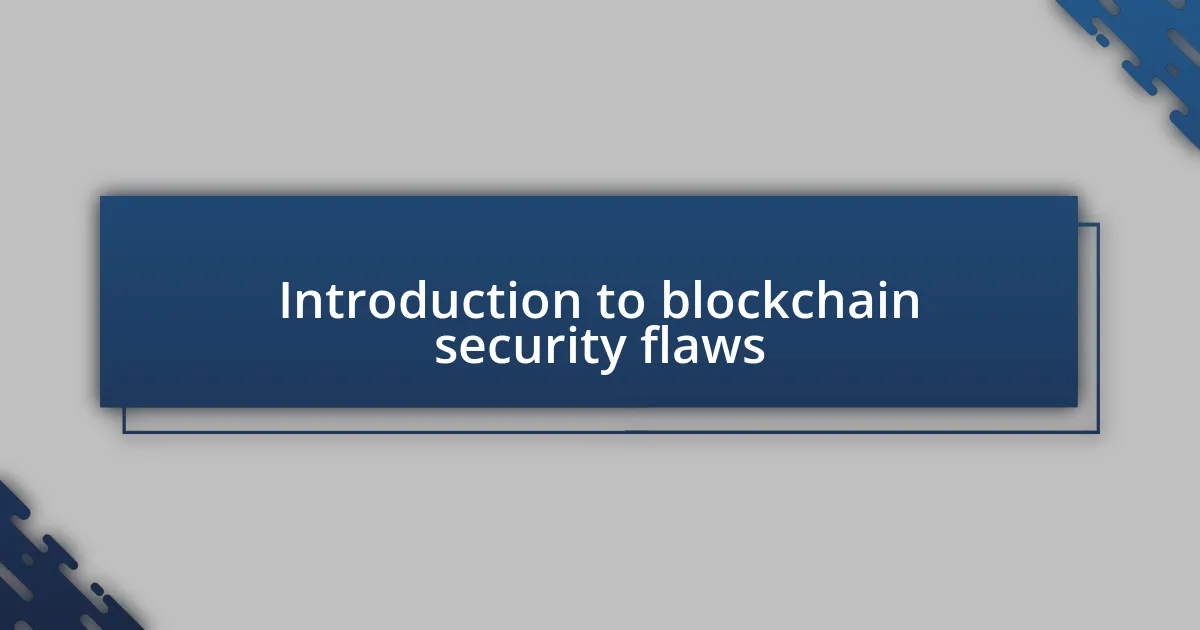
Introduction to blockchain security flaws
Understanding blockchain security flaws is crucial, especially as this technology becomes more integrated into our daily lives. From my experience, many people still view blockchain as completely secure, which can lead to overconfidence and unforeseen vulnerabilities.
In my own journey of exploring blockchain, I encountered various incidents illustrating the potential for exploits, such as the infamous DAO hack. It was eye-opening to realize that even the most advanced technologies can have weaknesses—didn’t we think that transparency would inherently safeguard us?
Moreover, these security flaws don’t just impact developers or tech experts; they ripple through our economy, sparking breaches of trust. When I consider the implications of a security compromise, I can’t help but wonder: how many more innovations will be stifled by fear of vulnerability in the blockchain space? The reality is that understanding these flaws is essential for all stakeholders involved.
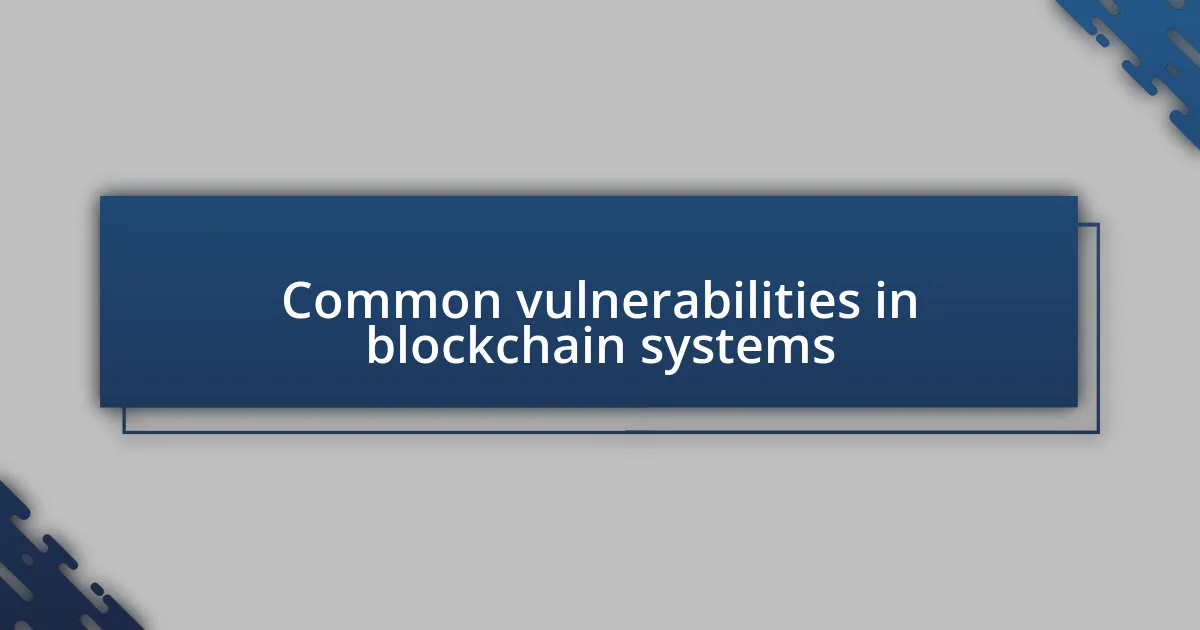
Common vulnerabilities in blockchain systems
Common vulnerabilities in blockchain systems can often be traced back to a few key areas. For instance, smart contract vulnerabilities arise from coding errors or unintended logic flaws, which can lead to significant financial losses. I’ve seen firsthand how even minor mistakes in a smart contract can be exploited, much like how a simple typo can open the door to a bigger issue.
Another frequent vulnerability is the 51% attack, where a group of miners holds more than half of the network’s mining power. This scenario can undermine the integrity of blockchain transactions, leading to double spending and blocking legitimate transactions. I remember discussing this with fellow blockchain enthusiasts who were shocked by how easily trust can be compromised when such an event occurs, highlighting the fragility behind perceived security.
Lastly, inadequate key management poses serious risks as well. Public keys are meant to be a secure way to access assets, but if they are not managed properly, they can lead to unauthorized access. From my observations, many users underestimate the importance of safeguarding their keys, often ignoring the reality that one careless mistake can lead to a loss that’s irreversible.
| Vulnerability Type | Description |
|---|---|
| Smart Contract Vulnerabilities | Errors in coding or logic can be exploited for financial gain. |
| 51% Attack | Control of the majority of mining power can compromise transaction integrity. |
| Inadequate Key Management | Poorly managed keys can lead to unauthorized access and loss of assets. |
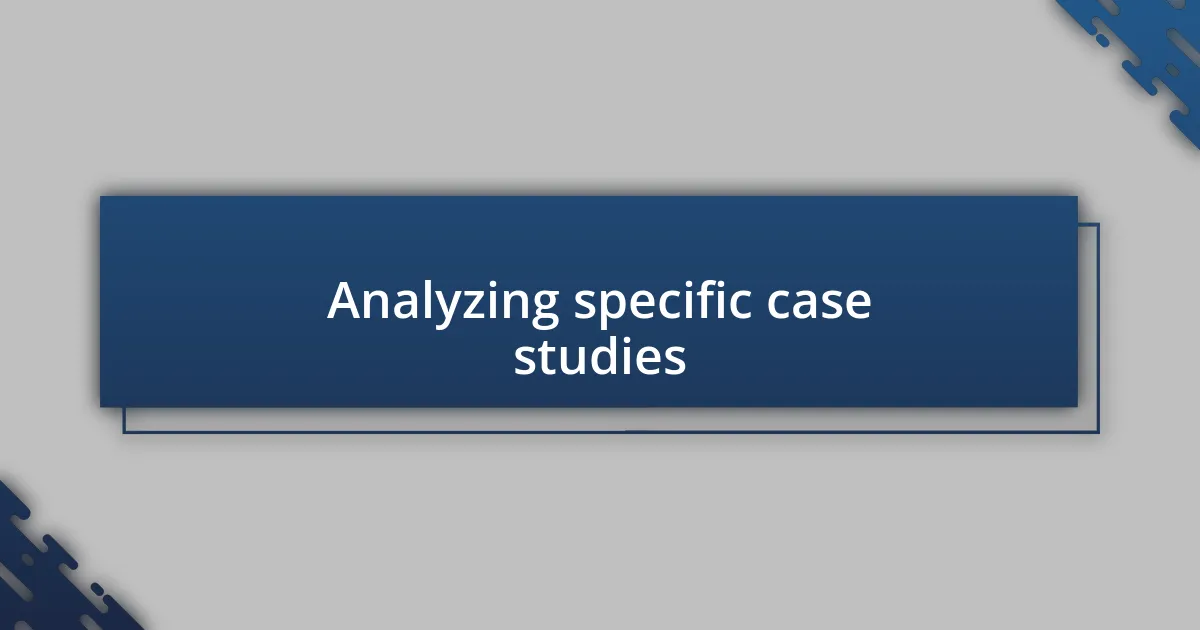
Analyzing specific case studies
Analyzing specific case studies in blockchain security reveals the real consequences of vulnerabilities. For instance, in the infamous DAO hack, a smart contract flaw allowed an attacker to siphon off $50 million worth of Ether. It was a heart-wrenching moment for those involved; I could sense the community’s collective gasp as they watched their investments vanish, a stark reminder of how critical secure coding is in smart contracts.
Another case worth examining is the Parity wallet bug, where an accidental code error locked up $160 million in Ether due to a flaw in the library contract. It’s frustrating to witness such incidents when they could have been prevented with thorough auditing. The emotional pain for those who lost access to their assets resonated across forums, highlighting the importance of rigorous testing and code reviews in the blockchain space.
- The DAO hack exposed vulnerabilities in smart contracts and led to significant financial losses.
- The Parity wallet bug illustrated how even small coding mistakes can have devastating effects on asset accessibility.
- Both incidents emphasize the urgent need for thorough testing and auditing to mitigate risks in blockchain development.
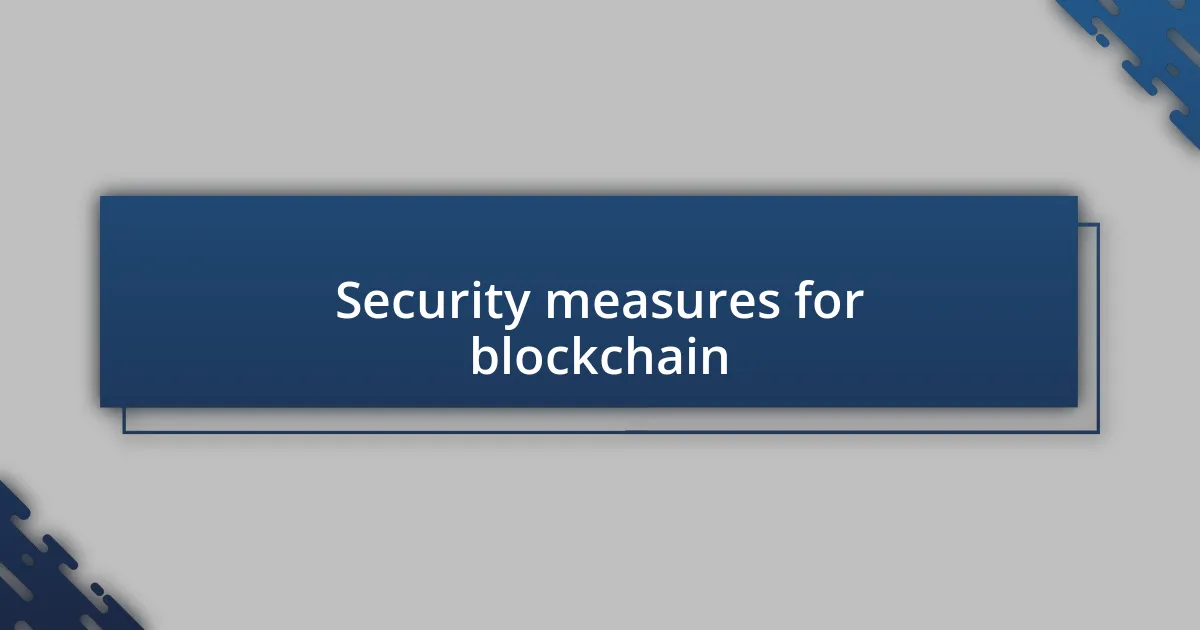
Security measures for blockchain
When it comes to securing blockchain networks, robust cryptographic techniques are essential. I often reflect on how these techniques serve as the backbone of security, protecting data integrity and confidentiality. For instance, the use of public and private key cryptography allows users to maintain control over their digital assets, minimizing the chances of unauthorized access.
Tokenization is another security measure I’ve come to appreciate. By replacing sensitive information with unique identifiers, it can significantly reduce fraud risk. When I think of how companies might leverage this to safeguard customer data, I can’t help but feel a sense of reassurance, knowing that even in the face of a potential breach, the actual sensitive data remains secure.
Moreover, regular audits and penetration testing can’t be overlooked. I’ve seen firsthand how these proactive measures can identify vulnerabilities before they become points of exploitation. There’s something almost empowering about knowing that a thorough evaluation can shed light on hidden risks—a crucial step in building trust not just in the technology, but in the larger community as well. By implementing ongoing security assessments, blockchain developers can create a more resilient framework that adapts to new threats.
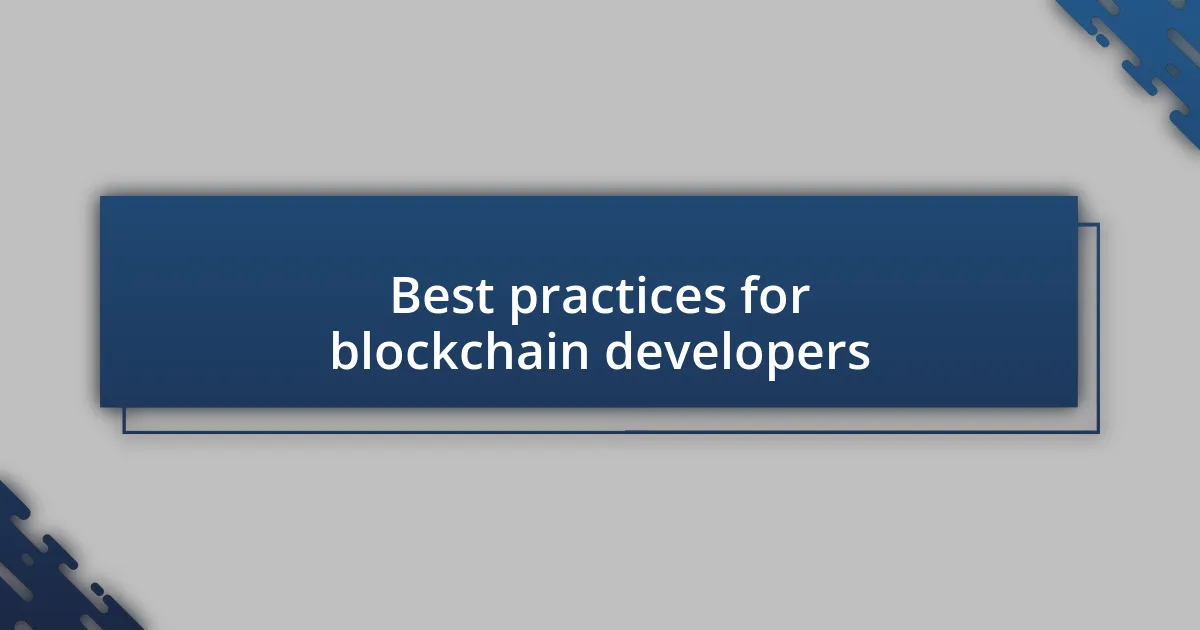
Best practices for blockchain developers
When developing blockchain applications, adopting a modular architecture can be a game changer. From my experience, breaking down the system into smaller, manageable components not only fosters better security but also allows for easier updates and maintenance. Have you ever encountered a complex system where a single flaw put everything at risk? By implementing modularity, developers can isolate vulnerabilities without compromising the entire network.
Additionally, ensuring secure coding practices is paramount. I recall a project where a small oversight in code led to a significant security breach, costing time and resources that could have been avoided. This taught me the importance of code reviews and pair programming. By urging developers to regularly review each other’s work, you’re creating a culture of accountability and attention to detail that can drastically minimize security risks.
Finally, always be up to date with the latest security developments. The blockchain landscape evolves rapidly, and missing out on new tools or practices can leave your project vulnerable. I find that participating in blockchain developer communities provides a wealth of knowledge and shared experiences that can inspire innovative solutions. Engaging with others in the field not only expands your knowledge but also fosters a sense of collaboration that is essential for combating emerging threats.
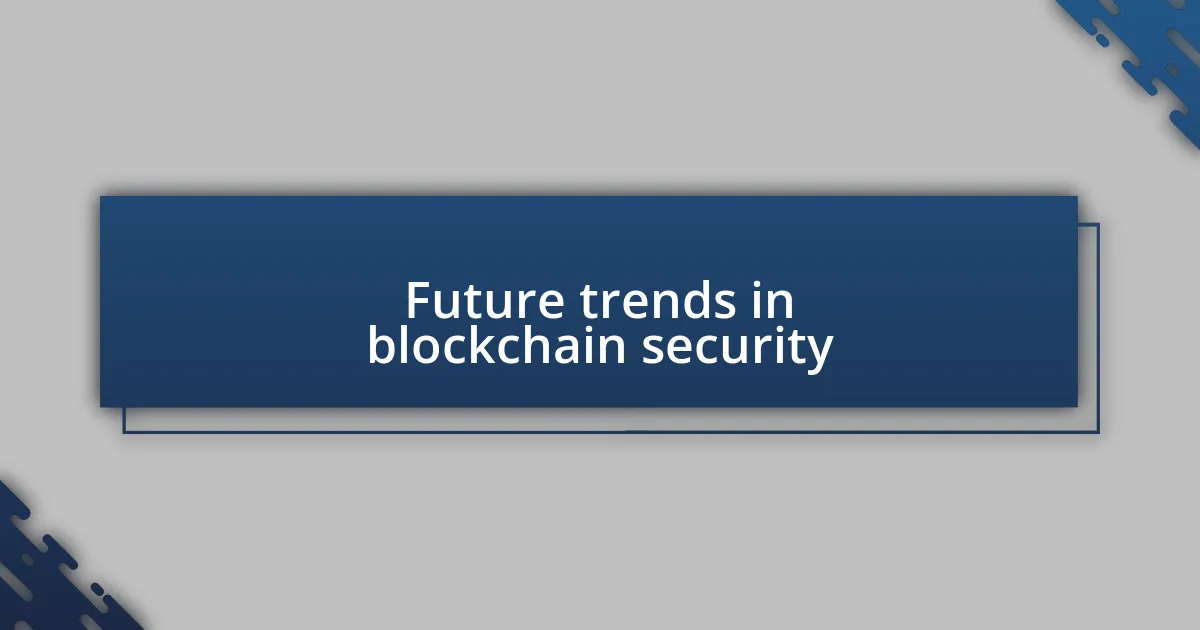
Future trends in blockchain security
As I reflect on the future of blockchain security, one trend that stands out is the integration of artificial intelligence. In my experience, AI can enhance threat detection and response capabilities, analyzing patterns and anomalies that might escape human scrutiny. Have you ever thought about how quickly a single attack can escalate? With AI’s ability to process vast amounts of data in real-time, we can potentially mitigate risks before they spiral out of control.
Another emerging focus is the importance of decentralized security protocols. I’ve seen firsthand how centralized systems can become prime targets for attackers. By distributing security measures across the network, we not only reduce single points of failure but also empower users to take an active role in maintaining security. It’s fascinating to think about how communities can band together, sharing the responsibility of safeguarding their data.
Finally, I believe there will be a significant push towards regulatory frameworks surrounding blockchain security. The lack of clear guidelines often leaves developers in a gray area, and I’ve felt that uncertainty myself when navigating compliance. Establishing robust standards will not only build trust among users but will also encourage best practices across the industry. How can we cultivate a safer environment without foundational regulations? The future direction seems clear; collaboration between developers, regulators, and users will be crucial in forging a secure blockchain landscape.
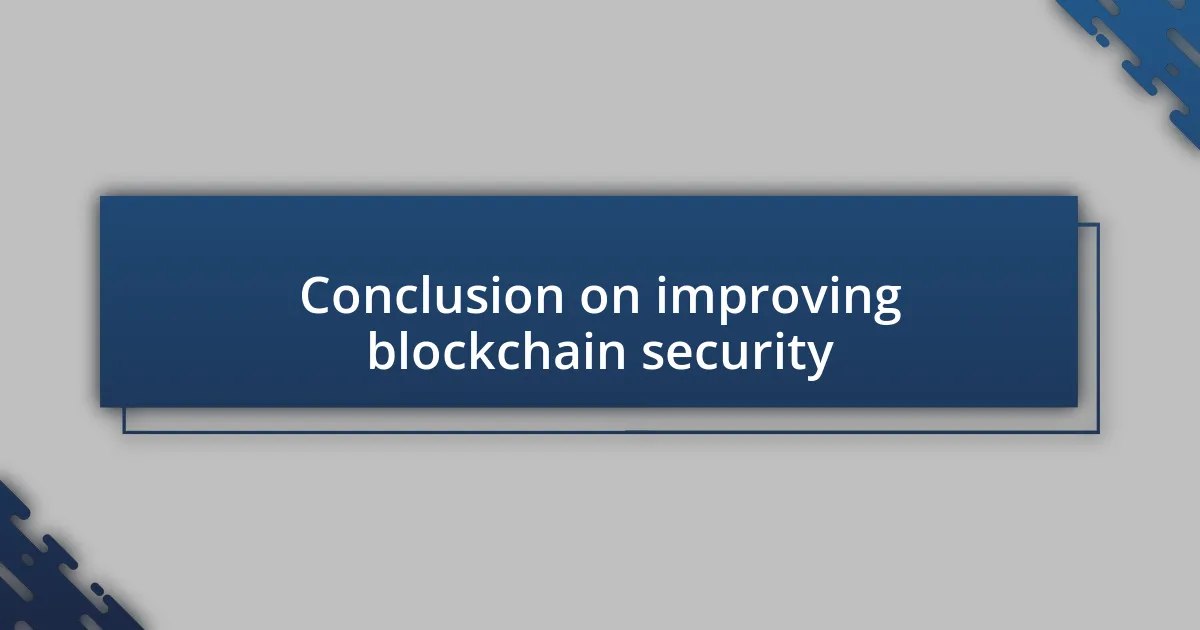
Conclusion on improving blockchain security
To truly enhance blockchain security, prioritizing education across the ecosystem is vital. I’ve often encountered developers who, despite their skill, lack a fundamental understanding of security practices specific to blockchain. This gap can lead to vulnerabilities that could have been easily mitigated. Isn’t it intriguing how a simple shift in focus towards training could yield such significant results?
Another essential aspect is the continuous assessment of security protocols. In my experience, many organizations adopt a “set it and forget it” mentality when it comes to security. Yet, as the threat landscape evolves, so too must our strategies. Regular audits and updates can ensure that the security measures are effective and up-to-date. Have you ever wondered if your current defenses could withstand the next wave of attacks?
Lastly, fostering a culture of transparency is paramount. I’ve noticed that organizations that openly share their security challenges and solutions not only bolster their own defenses but also contribute to the larger community. It raises the question: how can we all grow stronger if we don’t share our experiences? Collaboration and openness can drive innovation in security practices, turning past mistakes into collective knowledge that benefits everyone involved.

